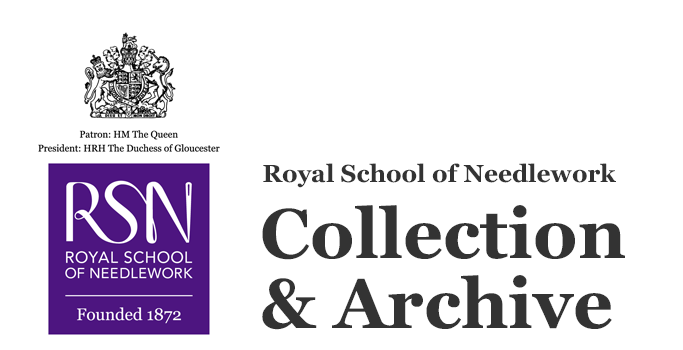Letter case
Object name
Date made
Circa 1840-1860
Place made
Description
A circa 1840-1860 Native American letter case embroidered with moose hair by a member of the Huron-Wendat Nation.
Content description
A large letter case made of two rectangular pieces of red felted wool with white moose hair edging couched with black thread. The design is worked in moose hair dyed in a variety of colours and includes a delicate border of white flowers and buds leading to corner sprays. French knots, satin stitches, pistil stitches, and long and short stitches are used throughout. Two opposite corners have three white buds, while the other two have an open blue flower worked in French knots with two small blue buds and heart-shaped leaves. The central design has two large pink flowers with yellow centres created from small knots of moose hair, and three buds of the same flower. There are two five petalled flowers in peach and white with a matching bud and three single stems of orange, blue, and pale pink buds, all with matching foliage. The peach and white flowers, blue flowers, and three central buds are padded and slightly raised. The moose hair that adorns this letter case is usually harvested from the neck, cheek, or occasionally the rear of a moose.
The back of the letter case is plain red felted wool. The inside of the case is lined with deep red silk, which is now somewhat faded. There are two sides to the interior, separated by a silk-covered board. One side is folder in which to hold papers. On the other is a small pocket fastened to the interior of the letter case's back with herringbone stitches worked in purple silk. Sewn into the top of the pocket are two short, pink ribbons of undetermined use. There are two red silk strips which match the case's interior that run diagonally across the top of the letter case. One remains in situ, while the other has become unfastened on one side. The strips would have originally crossed each other. There are two small bows made of the same silk fastened to the bottom of the letter case's exterior.
This item was the work of a member of the Huron-Wendat Nation in the middle of the 19th century, likely between 1840 and 1860. In this period the Huron-Wendat of Quebec were famous for their souvenir art, sold to European tourists from the late 18th century to the late 19th century. This is one such example of this souvenir art. The floral imagery seen on this letter case is typical of the Huron-Wendat. Much of the moose hair embroidery produced by this community was stitched on buckskin, birchbark, or other animal hides. Some examples, like this, involve red felt. Items embroidered by the Huron-Wendat and sold as souvenirs include cases, baskets, boxes, and accessories.
These small moose hair objects produced for sale combined Native American materials with French techniques. The creators of these pieces skilfully blended Indigenous art practices with the floral motifs seen on other kinds of decorative arts popular in Europe and the United States.
The back of the letter case is plain red felted wool. The inside of the case is lined with deep red silk, which is now somewhat faded. There are two sides to the interior, separated by a silk-covered board. One side is folder in which to hold papers. On the other is a small pocket fastened to the interior of the letter case's back with herringbone stitches worked in purple silk. Sewn into the top of the pocket are two short, pink ribbons of undetermined use. There are two red silk strips which match the case's interior that run diagonally across the top of the letter case. One remains in situ, while the other has become unfastened on one side. The strips would have originally crossed each other. There are two small bows made of the same silk fastened to the bottom of the letter case's exterior.
This item was the work of a member of the Huron-Wendat Nation in the middle of the 19th century, likely between 1840 and 1860. In this period the Huron-Wendat of Quebec were famous for their souvenir art, sold to European tourists from the late 18th century to the late 19th century. This is one such example of this souvenir art. The floral imagery seen on this letter case is typical of the Huron-Wendat. Much of the moose hair embroidery produced by this community was stitched on buckskin, birchbark, or other animal hides. Some examples, like this, involve red felt. Items embroidered by the Huron-Wendat and sold as souvenirs include cases, baskets, boxes, and accessories.
These small moose hair objects produced for sale combined Native American materials with French techniques. The creators of these pieces skilfully blended Indigenous art practices with the floral motifs seen on other kinds of decorative arts popular in Europe and the United States.
Dimensions
width: 34.5cm
height: 26cm
height: 26cm
Materials
Stitches
Motifs
Catalogue number
COL.21
Other numbers
RSN 378
© Royal School of Needlework

